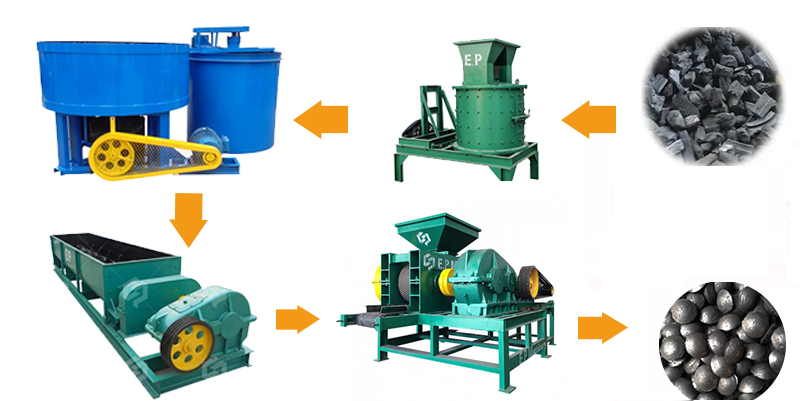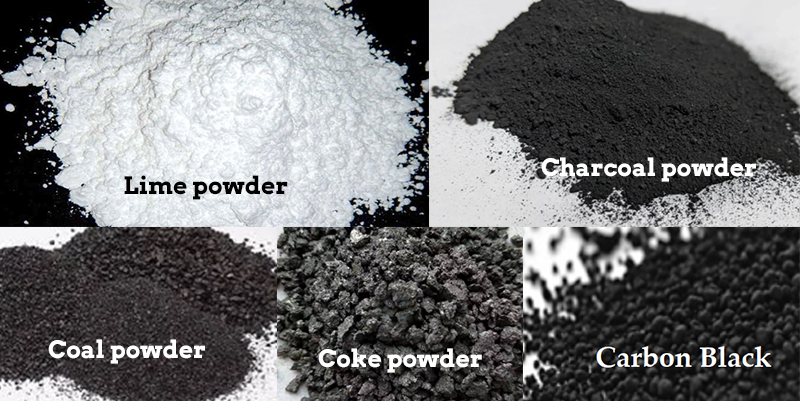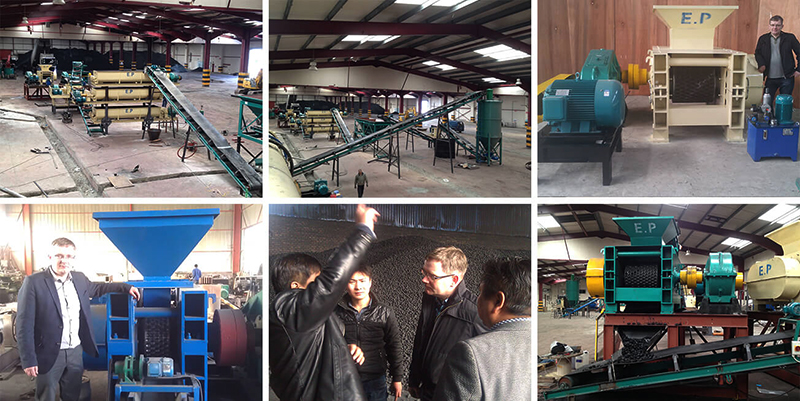Revealing the secrets of briquette production line: process, raw materials, equipment, full analysis!
- 2024-06-07 13:54:00
- E.P Original
- 1756
1. Coke briquette manufacturing process
The production processes of coke and briquette are similar, both using coking coal as raw materials. But compared with coke production, the process flow of briquette production is simpler, with less investment and lower production costs.
Before you decide to build your own briquette plant or start a briquette business, it is crucial to understand the entire production process.
First of all, the selection and preparation of raw materials is the basis, and the right type of coal needs to be selected according to production needs.
Next, the raw materials will be crushed to ensure the uniformity of the materials and the smooth progress of subsequent processes.
The crushed raw materials will be fed into the feeding system, which ensures that the raw materials are continuously and stably supplied to the mixer.
In the mixing stage, in addition to coal powder, a certain proportion of binders and other additives may be added to improve the quality and strength of the briquette.
The mixed materials will enter the pressing stage, where a special briquetting machine is used to press the materials under high pressure to form preliminary briquette.
Subsequently, these semi-finished products need to be dried to remove excess moisture and enhance the stability and durability of the briquette.
The last step is briquetting, which is the final stage of briquette forming. By precisely controlling the pressure and time, the shape, size and density of each briquette are guaranteed to meet the standards.

After completing all these steps, the briquette can be packaged and prepared for sale or further processing.
2. Common raw materials for briquette production lines.
There are many kinds of raw materials commonly used in briquette production lines. Each raw material has its unique function and role. The selection and use need to be determined according to the specific application scenarios and performance requirements of the briquette to ensure that the briquette produced can meet different industrial needs.
Coal powder is the most common raw material. Its main source is ground coal ore. This powder can release a lot of heat when burned and is one of the indispensable energy sources for producing briquette.
Charcoal powder comes from the pyrolysis of wood in an oxygen-free or low-oxygen environment. It has a high carbon content and can generate high temperatures during combustion. At the same time, due to its rich pore structure, it can also help improve combustion efficiency.
Coke powder is a solid product obtained by dry distillation of coal. It has the characteristics of high calorific value and low ash content. Using coke powder as a raw material can significantly improve the combustion performance of briquette and reduce pollution emissions.
Carbon black is a fine powder obtained by incomplete combustion of organic matter (such as petroleum). It has a high carbon content and good conductivity. It is often used to enhance the mechanical strength and improve the electrical properties of briquette products.
Mineral powder includes manganese ore powder, nickel powder, silicon carbide, etc. These powders usually contain special minerals that can add specific chemical or physical properties to briquette. For example, manganese ore powder can increase the catalytic properties of briquette, while silicon carbide can improve wear resistance.
Lime powder is mainly derived from limestone and is ground into fine powder for briquette production. It can play a role in sulfur fixation during combustion, effectively reduce sulfur dioxide emissions, and have a positive effect on environmental protection.

3. Main equipment for briquette production
The equipment commonly used in the design and construction of briquette plants includes crushers, screeners, mixers, coal briquetting machines, dryers, belt conveyors, etc.
As an important role in the production line, the crusher is responsible for breaking large pieces of coal raw materials into small pieces that meet the requirements.
The function of the screener is to classify the crushed coal and divide it into different grades according to the particle size. This step can also be omitted according to the actual situation.
The mixer is used to evenly mix the crushed and screened coal powder with an appropriate amount of additives. This process is a key step to improve the quality of finished coal blocks.
The function of the coal briquetting machine is to press the mixed coal into a certain size of coal blocks. Our briquetting machine is used to make a large amount of powdered materials into high-density coal balls. The pressure of different briquetting machines varies. You can choose the right briquetting machine according to the raw materials.
The dryer dries the pressed wet coal blocks to remove excess moisture and improve the stability and storage life of the coal blocks.
The belt conveyor is an important facility connecting various production equipment. It is responsible for transporting raw materials and finished products throughout the production process.
4. Size and shape of briquette
Common molding molds include cylindrical, square column, spherical, pillow and polygonal shapes. According to different application fields and customer needs, briquette products of different shapes, sizes, densities, strengths and calorific values can be customized.

Round briquette is widely used because of its uniform structure, easy manufacturing and transportation. They are usually between 15 and 30 mm in diameter, can provide a large specific surface area, and are conducive to improving combustion efficiency. Square briquette is favored for its good stability and convenient stacking. The side length is generally between 20 and 40 mm, which is suitable for occasions requiring high loading density.
Due to its unique shape, columnar briquette can achieve better air circulation in specific combustion equipment, thereby improving the combustion effect. The design of its length and diameter ratio is also based on actual needs.
In the actual production process, it is necessary to select appropriate formulas and process parameters according to specific use requirements and standards to prepare briquette products that meet the requirements.
FAQ:
Q: Can you send me the price and delivery information of coal/charcoal briquetting machine?
A: How many kilograms of briquettes do you want to produce? After receiving your reply, so that we can give the correct suggestion and recommend the right machine for you.
Phone
+86-13673361755
+86-13673361755
Telephone
+86-371-8611808
sale@ep-machine.com
Address
Shenglongjinzhonghuan Building, Zhongyuan District Zhengzhou City, Henan Province, China.

